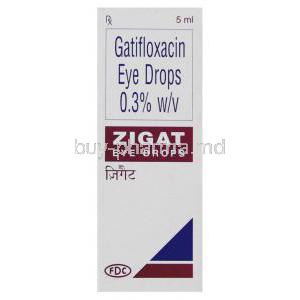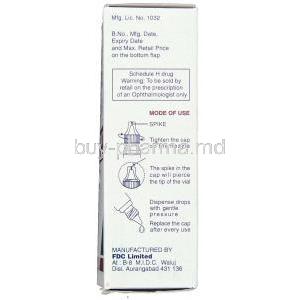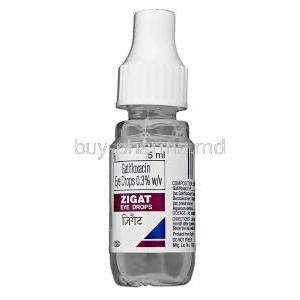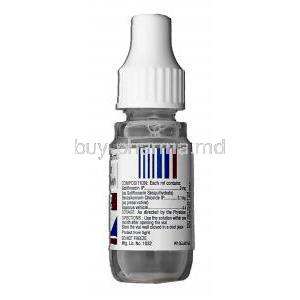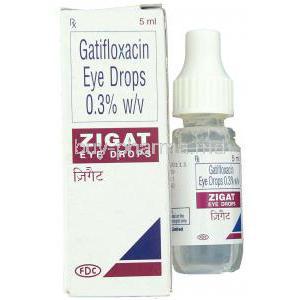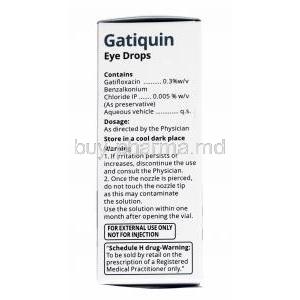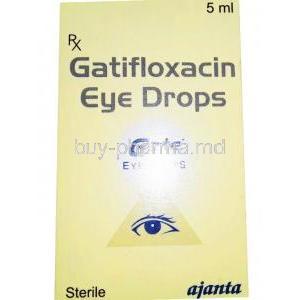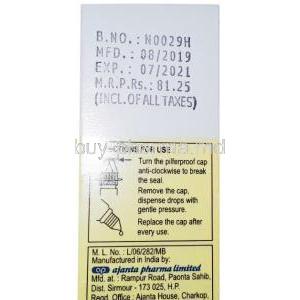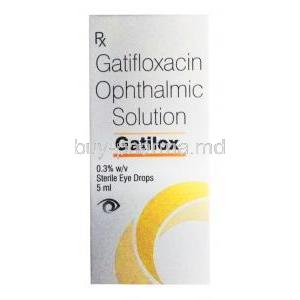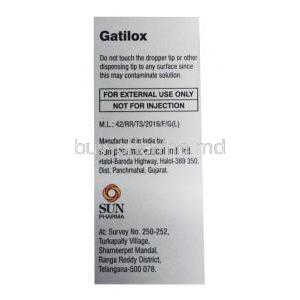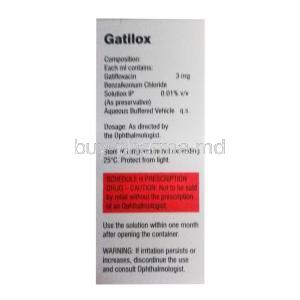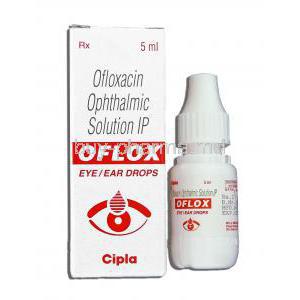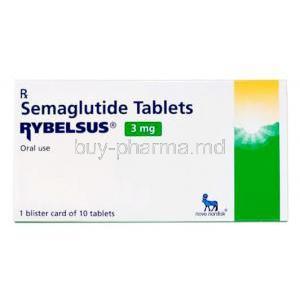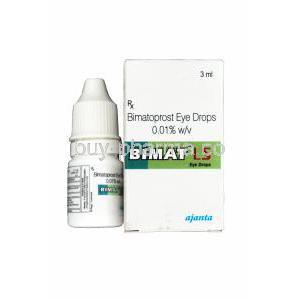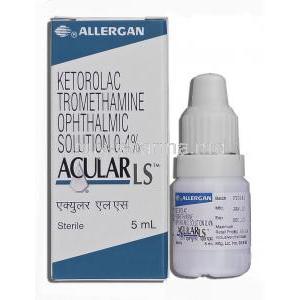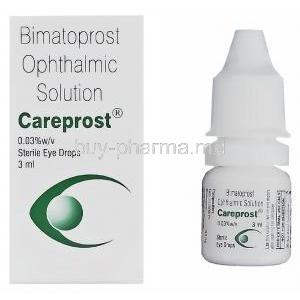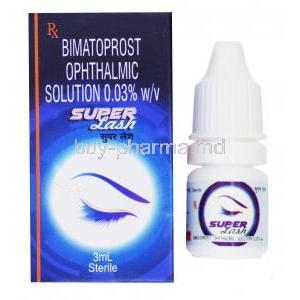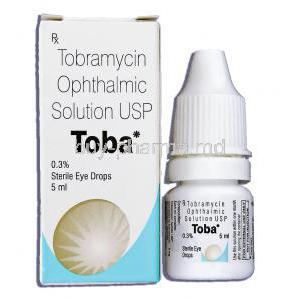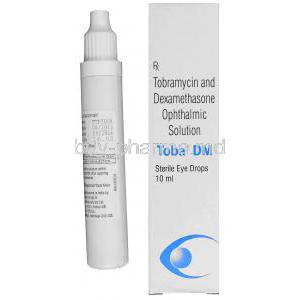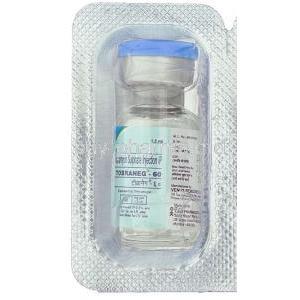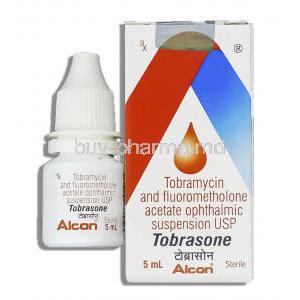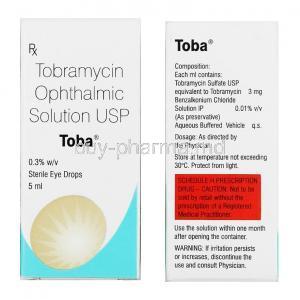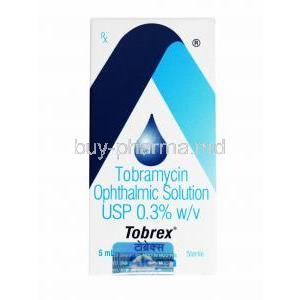Gatifloxacin
- I. Introduction
- II. Composition of Gatifloxacin Eye Drops
- III. How Gatifloxacin Eye Drops Work
- IV. Uses of Gatifloxacin Eye Drops
- V. Off-Label Uses of Gatifloxacin Eye Drops
- VI. Dosage and Administration of Gatifloxacin Eye Drops
- VII. Interactions of Gatifloxacin Eye Drops
- VIII. Side Effects of Gatifloxacin Eye Drops
- IX. Warnings and Contraindications
- X. Special Considerations in Administration
- XI. Overdose: Symptoms, Management and Prevention
- XII. Important Precautions when Using Gatifloxacin Eye Drops
- XIII. Storage of Gatifloxacin Eye Drops
- XIV. Recap of Gatifloxacin Eye Drops
I. Introduction
A. Brief Overview of Gatifloxacin Eye Drops
Gatifloxacin eye drops have become widely used in the medical field to treat bacterial conjunctivitis, an inflammation of the eye's outermost layer. These eye drops contain a powerful fluoroquinolone antibiotic known as gatifloxacin, effectively and swiftly eliminating bacterial infection and promoting healing.
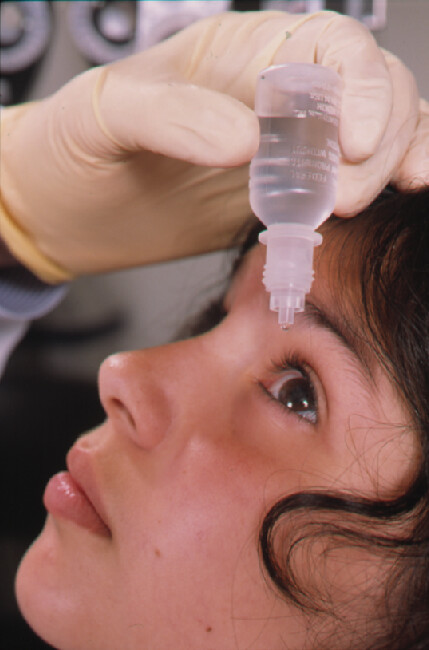
Eye drop
B. Historical Development and FDA Approval
During the late 1990s, Kyorin Pharmaceutical Co. Ltd unveiled Gatifloxacin as a noteworthy development. Rigorous clinical trials and safety assessments were carried out before the US Food and Drug Administration (FDA) approved medical usage of Gatifloxacin eye drops in the United States in 1999(1). This authoritative endorsement by the FDA resulted from ensuring its considerable efficiency and safety in combating bacterial conjunctivitis. Thus representing a crucial advancement in ophthalmic treatment.
1. Acess Data - US Food and Drug Administration Gatifloxacin
II. Composition of Gatifloxacin Eye Drops
A. Primary Active Ingredient
Gatifloxacin is an essential component found in these eye drops. Serves as a potent antibiotic belonging to the fluoroquinolone class. This remarkable compound demonstrates its efficacy against diverse bacteria by effectively inhibiting their DNA reproduction, ultimately culminating in the bacterias' demise.
B. Inactive Ingredients
Alongside gatifloxacin, eye drops also consist of several inactive ingredients. These ingredients play a crucial role in enhancing the overall stability and effectiveness of the formulation. These inactive ingredients include edetate disodium, sodium chloride, hydrochloric acid, and/or sodium hydroxide (for pH adjustment). As well as purified water.
C. Strength and Formulation Details
The eye drops containing gatifloxacin are commonly available in a strength of 0.5%. This indicates that every milliliter of the solution contains 5mg of gatifloxacin. These dropper bottles are conveniently packed with a clear and pale yellow—sterilized solution for effortless application.
III. How Gatifloxacin Eye Drops Work
A. Mechanism of Action
Gatifloxacin, the active ingredient, functions by inhibiting the essential enzymes of bacteria known as DNA gyrase and topoisomerase IV. These enzymes play a critical role in various DNA activities such as transcription, replication, repair, recombination, and transposition. By obstructing these enzymes' functioning, gatifloxacin disrupts the normal DNA processes of bacteria leading to their demise and successful resolution of the infection.(1)
B. Pharmacodynamics and Pharmacokinetics
Upon administration, gatifloxacin rapidly exhibits its efficacy by swiftly penetrating the cornea leading to a peak concentration in both the conjunctiva and cornea within 2 hours of application. Its therapeutic effects predominantly manifest locally since it is formulated as an ophthalmic solution. The risk of experiencing systemic side effects is significantly minimized due to its minimal systemic absorption. It is worth noting that gatifloxacins' bactericidal activity follows a concentration-dependent killing pattern. Meaning that its effectiveness in eliminating bacteria intensifies as the concentration rises. Moreover, renal excretion serves as the primary means for eliminating this drug from the body.
IV. Uses of Gatifloxacin Eye Drops
A. Approved Indications
Recognized for their robust antibacterial properties, Gatifloxacin eye drops play a crucial role in clinical settings. Regulatory authorities endorse these drops as an effective remedy for treating bacterial conjunctivitis resulting from susceptible strains of bacteria. The wide-ranging efficacy demonstrated by these particular drops against both Gram-positive and Gram-negative organisms highlights their ability to combat diverse forms of eye infections with efficiency and adaptability.
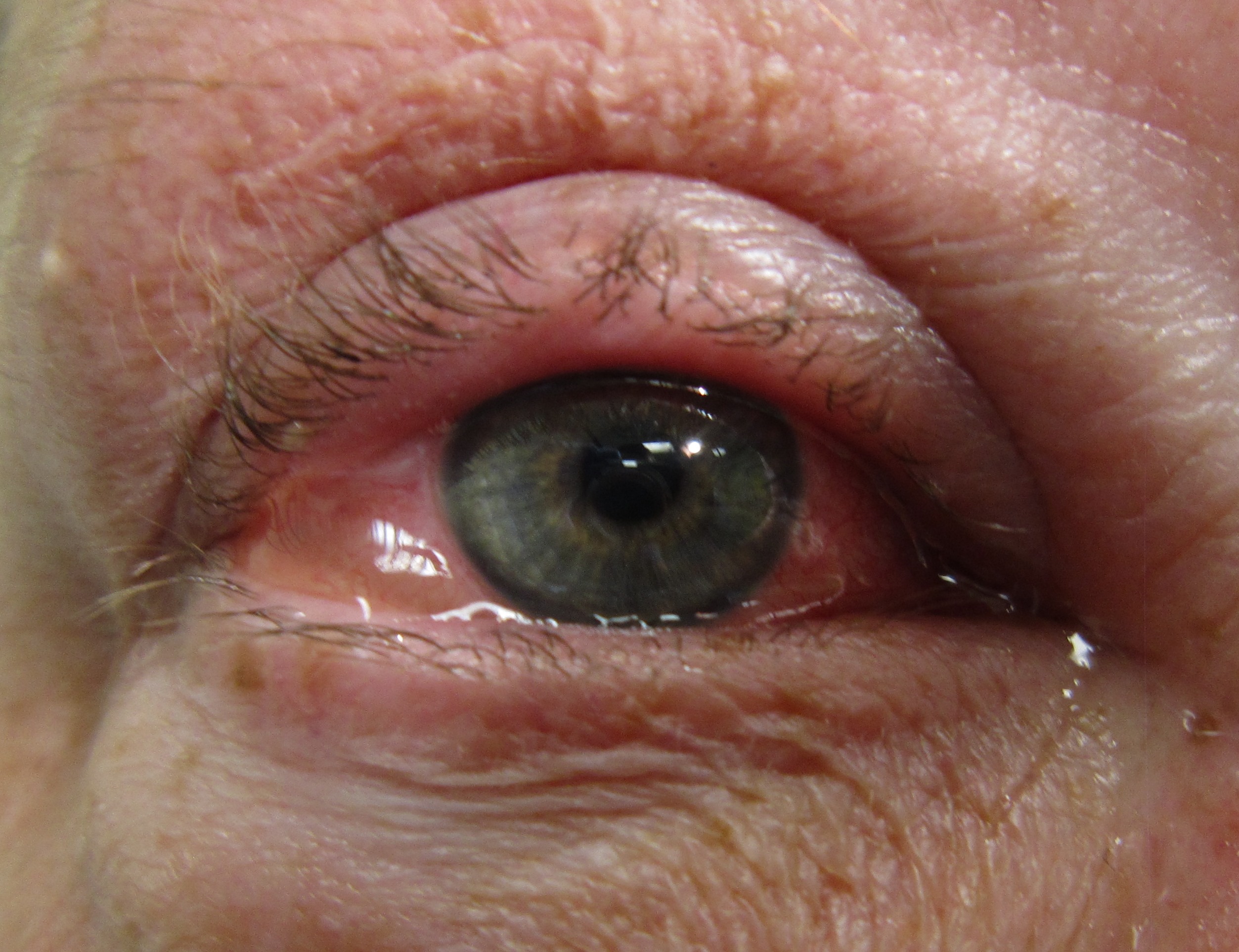
Conjunctivitis
B. Prophylactic Use in Eye Surgery
Gatifloxacin eye drops have become increasingly popular in eye surgeries for treating infections and as a preventive measure.
Surgeons often use them to minimize the risk of postoperative infections, particularly endophthalmitis, which can cause vision loss, by reducing the chances of infection. These eye drops play a crucial role in the successful outcome of ocular surgeries.
Preoperative use of gatifloxacin helps lower bacterial bioburden inhibiting the growth of harmful bacteria and ultimately ensuring safer surgical procedures and improved postoperative results.
C. Use in Treating Bacterial Conjunctivitis
Bacterial conjunctivitis is an inflammation of the conjunctiva, the thin transparent tissue covering the eye, If left untreated, This condition can cause considerable discomfort and may lead to complications. Gatifloxacin eye drops are a powerful fluoroquinolone antibiotic that can effectively combat many bacteria responsible for this condition, such as Streptococcus pneumoniae, Staphylococcus aureus, and Haemophilus influenza.
These eye drops work by eliminating the infection and alleviating the associated symptoms as a result, They promote faster recovery and enhance patient comfort.
V. Off-Label Uses of Gatifloxacin Eye Drops
A. Treating Non-bacterial Eye Infections
Gatifloxacin, though primarily developed for combatting bacterial infections. Some practitioners have observed it to possess value in addressing nonbacterial eye infections off-label. These infections could be caused by microorganisms that manifest comparable symptoms to those seen in cases of bacterial conjunctivitis.
While there is no official approval for using gatifloxacin in such instances, anecdotal evidence suggests a measure of effectiveness in relieving symptoms, presumably due to its anti-inflammatory properties. This medication may aid in diminishing inflammation and irritation and relieve accompanying discomfort as clinicians determine suitable treatments.
B. Usage in Veterinary Medicine
Despite lacking official approval for such purposes, Gatifloxacin has found utility in human medicine and veterinary practice. Veterinarians have resorted to using gatifloxacin eye drops off-label as a treatment for eye infections in various animal species. This decision is usually made following careful evaluation of the animal's health status and the drug's safety profile.
Nevertheless, it is essential to note that the pharmacokinetics and pharmacodynamics of gatifloxacin may differ across different species. As a result, dosage and administration must be adjusted accordingly. Moreover, it is crucial to closely monitor for potential side effects, interactions, or contraindications to ensure the welfare and protection of the creatures.
VI. Dosage and Administration of Gatifloxacin Eye Drops
A. Recommended Dosage for Different Conditions
The dosage of Gatifloxacin eye drops may differ based on the seriousness and nature of the infection. In the case of bacterial conjunctivitis,, applying one drop in the affected eye(s) every two hours while awake with a maximum of 8 times on the first day is generally recommended. Following this, One drop can be given up to 4 times a day until the condition improves. As for prophylactic use in eye surgeries, it is usually up to the operating surgeons' judgment to administer the drops.
B. Dosage Modifications in Special Populations
Adjustments to medication dosage might be needed for specific populations like elderly patients, children, or those suffering from kidney or liver disease. These modifications are typically unrelated to any changes in how the drug works within the body but instead arise due to an increased risk of experiencing adverse effects or encountering slower recovery times from infections among these groups. To guarantee utmost safety and care. Any alterations made regarding dosage levels must be overseen by a healthcare professional.
C. Instructions for Administration
To ensure a safe and effective administration of Gatifloxacin eye drops it is important to follow these simple steps:
1. Before and after applying the eye drops make sure to thoroughly wash your hands. This helps prevent the introduction of any harmful bacteria or germs.
2. To avoid contamination, it is crucial not to touch the dropper tip to any surfaces. This can introduce unwanted particles into the solution.
3. When applying the eye drops. Tilt your head back slightly and look upward. This will help create a space for the drops to be easily absorbed by your eyes.
4. Once you have tilted your head back gently pull down your lower eyelid to form a small pouch. This will serve as a receptacle for the drops.
5. Carefully place the prescribed number of drops into this pouch, making sure not to miss or spill any of them.
6. After placing the drops in the pouch. Close your eyes gently and keep them closed for about a minute or two. This allows the medication to distribute and work effectively properly.
7. It is important not to blink or rub your eyes immediately after applying the eye drops. Doing so may disrupt their absorption and reduce their effectiveness.
By following these steps diligently. You can ensure that you are properly administering Gatifloxacin eye drops while minimizing risks of contamination or improper application technique.
VII. Interactions of Gatifloxacin Eye Drops
A. Drug-Drug Interactions
Drug interactions can potentially change how medications function and raise the chances of experiencing severe side effects. While Gatifloxacin eye drops are administered topically and have limited absorption into the body, certain drugs that are taken orally or injected could potentially interact with it.
For instance, Drugs that affect the permeability of bacterial cell membranes, Like amiodarone, or those that inhibit the specific bacterial enzymes that Gatifloxacin targets, may potentially reduce its effectiveness. It is crucial to always inform your healthcare professional about all the products you are using, which includes prescription drugs, nonprescription drugs, and herbal products before commencing any treatment.
B. Drug-Food Interactions
Although systemic absorption of Gatifloxacin from eye drops is minimal, it is advisable to exercise caution when using them in patients who consume foods or supplements rich in minerals such as calcium, magnesium, and iron. This is because these minerals can potentially form complexes with Gatifloxacin in the stomach if it is swallowed, thereby hindering the drugs' absorption into the body. Nonetheless, it should be noted that the risk of such interactions occurring with eye drops is generally low due to their minimal systemic absorption.
C. Impact of Certain Medical Conditions
Those individuals who suffer from particular medical conditions such as kidney disease, liver disease, or a background of seizures must exercise prudence when utilizing Gatifloxacin eye drops. It is of utmost importance to communicate your entire medical history to your healthcare provider before initiating treatment.
VIII. Side Effects of Gatifloxacin Eye Drops
A. Most Common Side Effects
As with any medication, It is possible to experience side effects while using Gatifloxacin eye drops. Although not everyone does, The most frequently reported side effects are eye irritation, blurred vision, and eye redness(1). Typically these side effects are mild and resolve on their own. However, If they persist or worsen, It is important to seek guidance from your healthcare provider promptly.
B. Serious and Rare Side Effects
Gatifloxacin eye drops can sometimes cause serious side effects, which can include:
- Allergic reactions (rash, itching/swelling, severe dizziness, difficulty breathing)
- Eye pain
- Severe eye irritation
- Vision changes
Any of the side effects experienced, seek immediate medical attention immediately
C. Steps to Take if Side Effects Occur
If you experience any side effects while using Gatifloxacin eye drops, it is highly important to promptly inform your healthcare provider. They can guide you on how to effectively cope with these side effects and make a well-informed decision on whether it is appropriate to continue using the medication, in situations where severe allergic reactions occur. It is recommended to seek immediate medical assistance.
IX. Warnings and Contraindications
A. Individuals with Specific Health Conditions
To ensure safety and efficacy it is important for individuals with specific health conditions to approach the use of Gatifloxacin eye drops cautiously. Prior medical conditions such as kidney or liver disease, seizure disorders, or a previous hypersensitivity towards quinolones should be communicated to your healthcare provider before starting treatment. By doing so, necessary alterations in dosage or the treatment regimen can be made in order to prevent any potential adverse outcomes from arising.
B. Known Allergens and Reactions
Patients with a history of hypersensitivity to gatifloxacin or other quinolones should refrain from using gatifloxacin eye drops. Allergic reactions may include skin rashes, breathing difficulties, or severe dizziness. It is advisable for individuals who have previously experienced such reactions to avoid the use of these eye drops.
C. Potential Effects on Vision
Please be aware that there is a possibility of experiencing temporary blurred vision upon applying gatifloxacin eye drops. It is recommended that users to refrain from driving, operating machinery, or engaging in any activity that demands clear vision until they are confident in their ability to carry out these tasks safely.
X. Special Considerations in Administration
A. Administration to Elderly Patients
Elderly individuals may exhibit heightened sensitivity to the side effects of gatifloxacin, particularly if they have concurrent health conditions that could potentially complicate its administration. While there is no explicit requirement for dosage adjustment in this age group. It is advisable to closely observe and monitor these patients for any unfavorable reactions.
B. Administration to Pregnant Women and Nursing Mothers
The decision to use gatifloxacin during pregnancy should be based on a careful evaluation of its necessity and weighing of its possible benefits against any possible risks. The extent to which gatifloxacin passes into breast milk after administration as eye drops remains unknown. Making it prudent to approach the use of gatifloxacin in nursing mothers with caution.
C. Administration to Children
The use of Gatifloxacin eye drops has been approved for children aged one year and above to treat bacterial conjunctivitis caused by bacteria strains that are susceptible to the medication. However, it is important to note that there is a lack of established evidence regarding the safety and efficacy of this medication in infants below one-year-old. Therefore it is recommended always to seek guidance from a healthcare professional before administering Gatifloxacin eye drops to a child.
XI. Overdose: Symptoms, Management and Prevention
A. Identifying Overdose Symptoms
Given the nature of the drug, it is highly improbable that a gatifloxacin overdose will occur; however, In the rare event it does happen. Symptoms such as severe eye irritation, discomfort, or abnormal vision may manifest. Should any of these symptoms occur. It is crucial to seek assistance from a healthcare professional promptly.
B. Emergency Management of Overdose
If there happens to be an overdose, it is important to rinse the eyes entirely with water or a saline solution. If irritation, pain, or changes in vision continue after rinsing, immediate medical attention should be sought. For systemic symptoms like dizziness or difficulty breathing, it is recommended to get proper symptomatic treatment from a healthcare professional.
C. Prevention Measures
Maintaining awareness about preventing overdosing necessitates strictly following the guidelines a medical professional provides surrounding gatifloxacin eye drops administration. Going beyond the recommended dose limit and exceeding the prescribed frequency and duration for treatment must be avoided entirely in situations where there are apprehensions about excessive medication intake. Seeking prompt assistance from a qualified healthcare provider is highly advisable.
XII. Important Precautions when Using Gatifloxacin Eye Drops
A. Safety Measures during Application
Maintaining a high level of caution during gatifloxacin eye drop application is paramount to prevent any form of dropper tip contamination. Users should handle it with care by refraining from touching either their hands or eyes with the tip of the container. This crucial safety measure significantly mitigates bacterial contamination risks and potential infections that may arise as a consequence.
B. Use with Other Eye Medications
When using multiple eye medications simultaneously. Particularly other topical eye drops or ointments alongside gatifloxacin usage. Maintaining a substantial time interval of at least 5 minutes between their applications is crucial. Notably, one should always reserve the administration of eye ointments for the last step in this process. For accurate guidance regarding positioning and order-specific information about your unique set of medications prescribed. You must seek counsel from either your healthcare provider or pharmacist.
C. Precautions for Users with Contact Lenses
If you are displaying signs and symptoms of bacterial conjunctivitis or if you are undergoing treatment with gatifloxacin eye drops it is advised that you do not wear contact lenses. This is because there is a possibility that the lenses could absorb the medication. It is resulting in further irritation of the eyes. It is essential to seek guidance from your healthcare provider once the eye infection has fully cleared before considering wearing contact lenses again.
XIII. Storage of Gatifloxacin Eye Drops
A. Ideal Storage Conditions
Gatifloxacin eye drops should be stored at a comfortable room temperature—specifically between 15 and 30 degrees Celsius. In order to maintain their potency it is advised to store the drops in their original packaging and shield them from light and moisture. It is important to avoid storing the medication in a bathroom due to the dampness that could compromise its stability.
B. Shelf-life
The shelf life of gatifloxacin eye drops is usually 24 months from the date of manufacture when stored properly. Nevertheless, utilizing the drops within a month after opening is advisable to maintain effectiveness and minimize the chance of contamination. If the medication has surpassed its expiration date. It should always be discarded.
C. Handling Precautions
To ensure the integrity of gatifloxacin eye drops. It is essential to maintain clean hands when handling them. Doing so can prevent any potential contamination of the dropper tip. Additionally, it is crucial to always securely replace the cap after each use. Moreover, it is important to avoid any contact between the dropper tip and surfaces such as your eye or hands in order to prevent the medication from becoming contaminated.
XIV. Recap of Gatifloxacin Eye Drops
A. Recap of Key Points about Gatifloxacin Eye Drops
Gatifloxacin eye drops are an efficient remedy for bacterial conjunctivitis and can be used as a preventive treatment for eye surgery.
In addition to these approved uses these eye drops have been prescribed off label for non bacterial eye infections and in veterinary medicine.
Although generally well tolerated, It is important to note that there may be some side effects, such as temporary vision changes and ocular discomfort.
It is particularly crucial to closely monitor special populations like the elderly, pregnant or nursing women. And children when they are using this medication.
To ensure safety and effectiveness it is always necessary to adhere to the recommended dosage and administration guidelines in order to prevent overdose and adverse reactions.
B. Importance of Medical Supervision in Usage
Before beginning a new medication, including gatifloxacin eye drops, it is always advisable to consult with a healthcare provider. Seeking medical supervision is essential to guarantee the safe and effective utilization of this medication, particularly for individuals with pre-existing conditions or those currently taking other medications. It is crucial to remember that communicating any changes in your condition is vital and do not hesitate to inquire about your treatment plan.


